A few months ago, when I sailed through France’s Normandy Region aboard Tauck’s newly-refitted ms Sapphire, I was surprised to find that I was one of the few people onboard who hadn’t come expressly to see the D-Day Landing Beaches on Normandy’s Atlantic Coast.
Not that I’m not interested in D-Day; I am. I think the sacrifices made by those from Allied countries around the world are absolutely monumental, and created a marked change in the direction of World War II and in liberating France from Nazi occupation.
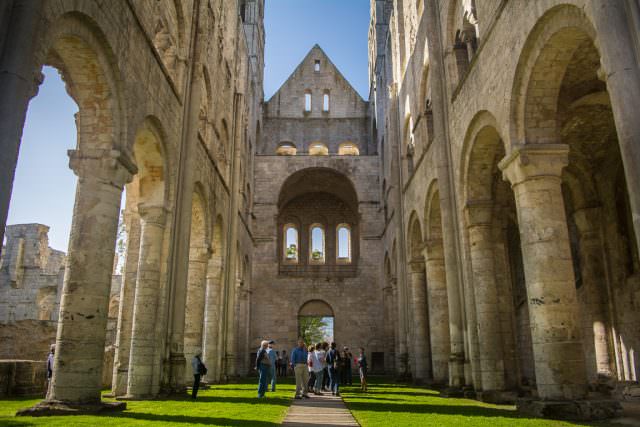
Jiumeges Abbey: just one of many historical sights you can see on a rivercruise through France’s Normandy region. Photo © 2017 Aaron Saunders
Having said that, I didn’t book my cruise just to see these landing sites. I certainly enjoyed seeing them, and found it to be an emotional and moving experience. But it was just one part of an overall wonderful cruise experience.
While the Beaches of Normandy and the D-Day invasion feature heavily in river cruise brochures advertising sailings down the Seine River, the Normandy region of France offers so much more to enjoy and experience – even if you have no interest in war history whatsoever.
The Pleasures of Paris
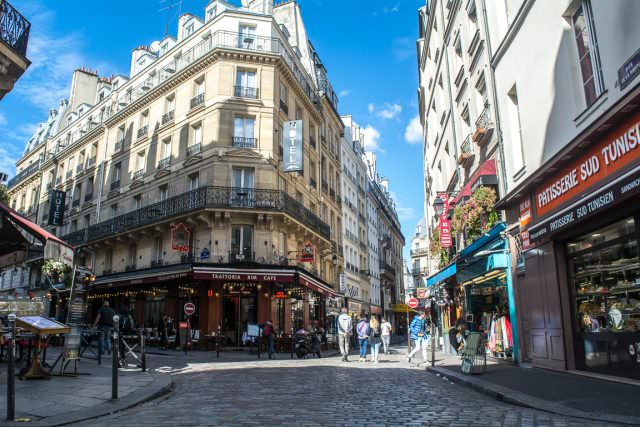
The ability to explore Paris pre-and-post cruise on most Seine adventures is a great reason to sail to Normandy. Photo © 2017 Aaron Saunders
These cruises to Normandy all begin in Paris, and the appeal of cruising from France’s City of Love should be readily apparent.
Paris offers so many interesting museums and cultural experiences that it would take a lifetime to discover them all. From the Louvre to the Musee d’Orsay, from Versailles to the grandeur of the city’s Belle Époque train stations, it’s easy to see why so many books, songs and movies have been based around the French capital.
Even if you don’t do the touristy thing and avoid all of the museums and the Eiffel Tower, it is easy to lose yourself in the city’s lovely streets, quiet shops and trendy cafes. Few places are as inviting to stop and watch the world go by as Paris; sometimes, half the fun is sitting down with a glass of wine and a simple lunch (get the fresh bread!) and, well, doing as the Parisians do.
Jeanne d’Arc
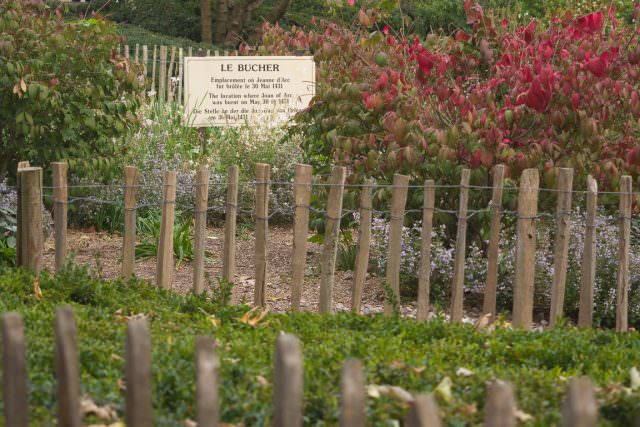
The fate of Joan of Arc is inexorably linked with the city of Rouen. A sign marks the approximate spot of her execution in 1431. Photo © 2017 Aaron Saunders
One figure that features prominently in Normandy is Joan of Arc, referred to as Jeanne d’Arc in her native France. The famous Maid of Orléans is one of France’s national heroines, immortalized for her role in the Hundred Years’ War and her eventual capture and execution, burned at the stake at just 19 years of age.
Joan of Arc was executed on May 30, 1431, in the city of Rouen. Today, Rouen is a major port of call for river cruises along the Seine, with much of its Medieval architecture well-preserved. The Rouen Cathedral, for example, still stands and appears largely as it would have during the time of Joan of Arc, and the tower keep of Rouen Castle, where Joan of Arc was imprisoned following her arrest, still stands amid a busy street and a car park.
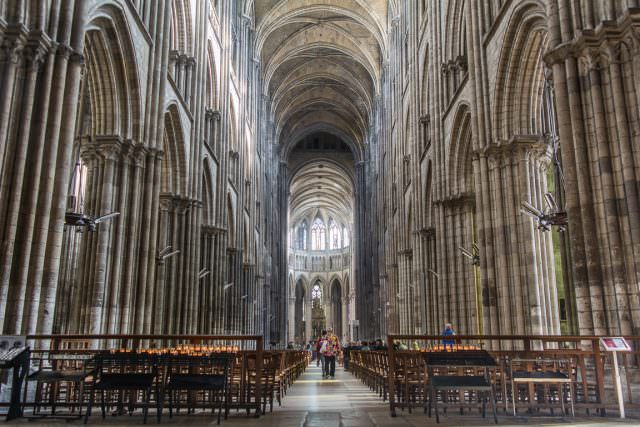
Inside Rouen Cathedral. Photo © 2017 Aaron Saunders
To stroll through Rouen is to step back in time. Lovingly preserved (even after being damaged in the Second World War), Rouen is one of the loveliest and most picturesque cities in Normandy. A call here is a great addition to Seine river cruises, and ships typically stay here for an entire day, with a few offering extended evening calls.
History, Culture and Food

Chateau Gaillard, perched high atop the town of Les Andelys. Photo © 2017 Aaron Saunders
Throughout Normandy, river cruise ships plying the Seine sail through picturesque villages dotted with timbered houses, Chateaus, and the ruins of castles. While these small towns lack an abundance of shopping opportunities, they excel in providing a quiet, local experience to enjoy a good meal or a glass of wine. A world apart from Paris, the towns and villages that line the banks of the Seine are the true heart of Normandy, and reflect the quiet, easygoing attitude of folks from here.
From the pretty seaside town of Honfleur to the quiet village of Les Andelys, the latter of which lies in the shadow of the famous Chateau Gaillard fortress constructed by Richard the Lionheart, Normandy offers so much more to see, explore and taste. Fresh seafood is paired with exquisite wines at even the most humble of restaurants, and cafes bustle with locals socializing with each other.
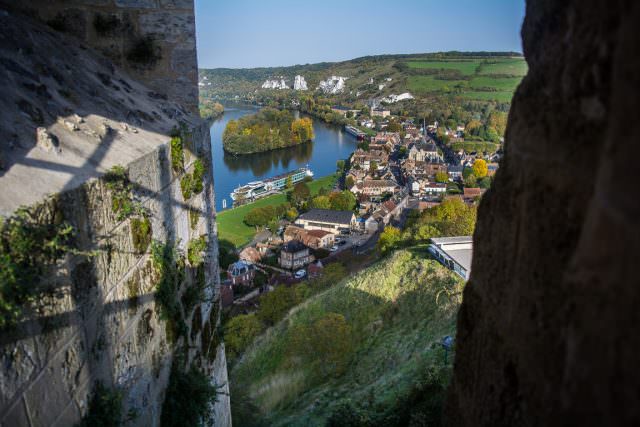
The town of Les Andelys, in France’s Normandy region, is seen from the ruins of Chateau Gaillard. Photo © 2017 Aaron Saunders
Perhaps the most interesting revelation of my entire journey down the Seine – and one that drives home the reality of the D-Day landing sites – was found in the town of Arromanches sur Mer.
We’d stopped to see the exceptional D-Day Museum situated by the sea, within sight of one of the massive steel landing pontoons constructed and brought ashore by the Allies.
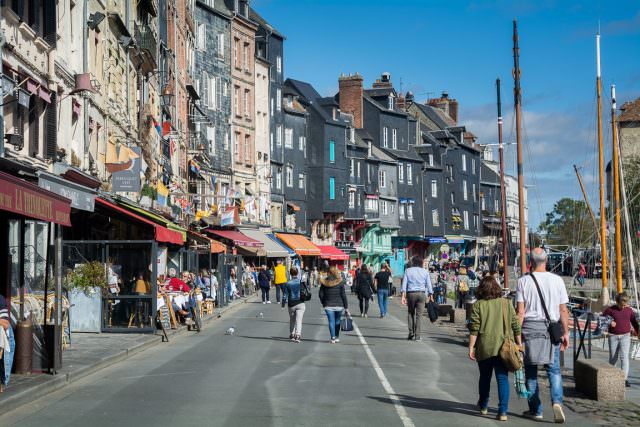
The pretty seaside town of Honfleur. Don’t leave without trying the catch of the day! Photo © 2017 Aaron Saunders
A sign near the beach showed the same area as it had existed in the mid 1930’s. It was the same beach, filled with locals and holidaymakers. Changing tents dotted the landscape, and people frolicked in the water.
Back then, the beach was just a beach. Today, they are hallowed ground, respected and remembered for the men who lost their lives there.
But as important as it is to honor those who gave their lives during the D-Day Invasion, so too is it to remember that Normandy, as a region, is much more than just its beaches.
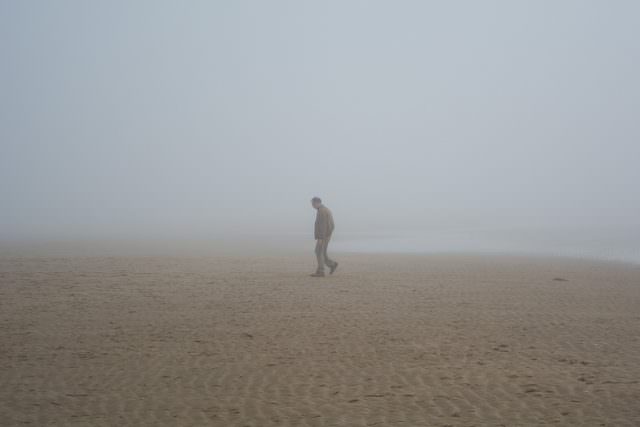
Walking the beaches at Arromanches sur Mer. Photo © 2017 Aaron Saunders

Since my last river cruise experience in Provence, I fell in love with Europe and its rich culture and tradition, plus the architectural structures. Maybe if money and time will allow, this will be my next destination. I got excited when I saw the Rouen Cathedral. It was beautifully captured. Thanks for posting!